An Aircraft Graveyard Aims to Save Lives
Skeletons of old airplanes fill an unmarked warehouse outside downtown L.A. Some are ashy, charred by flames from exploding engines. Others show walls of crunched metal where pilots used to sit. An old U.S. Border Patrol helicopter still litters the ground with dust from El Paso, Texas, where it crashed a few years ago.
This aircraft graveyard holds wreckage from eight crashes in the past five years—and important clues about what happened.
“There are approximately 1,500 accidents every year in the U.S. They’re seldom big aircraft, but there might be damage, there might be injury, there might be death,” said Thomas Anthony, director of the USC Aviation Safety and Security Program. “There are 1,500 incidents with insurance companies, lawyers, pilots, claimants. There’s a lot of work to be done.”
Students come from the world over to study Aircraft Accident Investigation, a course in the program. Most of these professionals work in the aerospace industry—as pilots, managers, government officials or military officers—but few have actually encountered accidents.
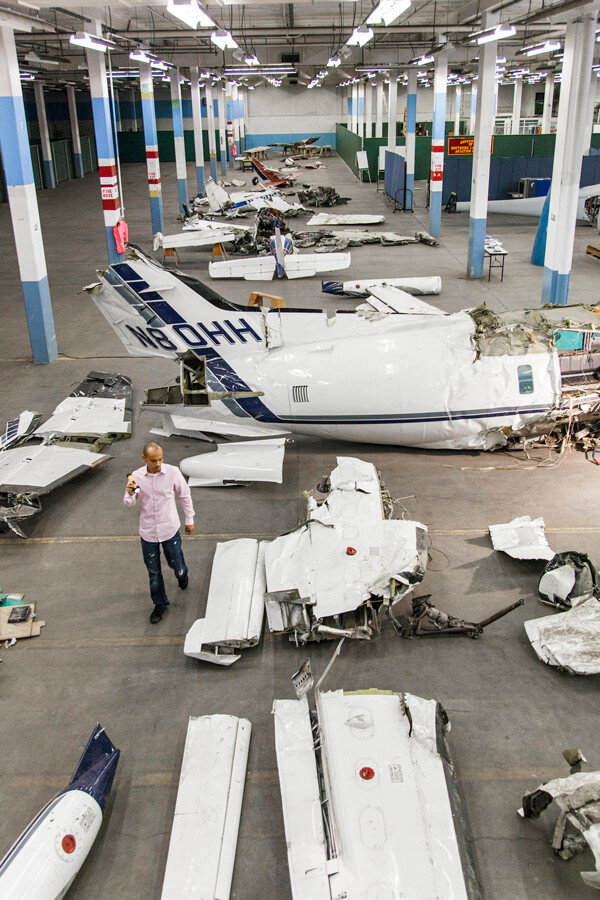
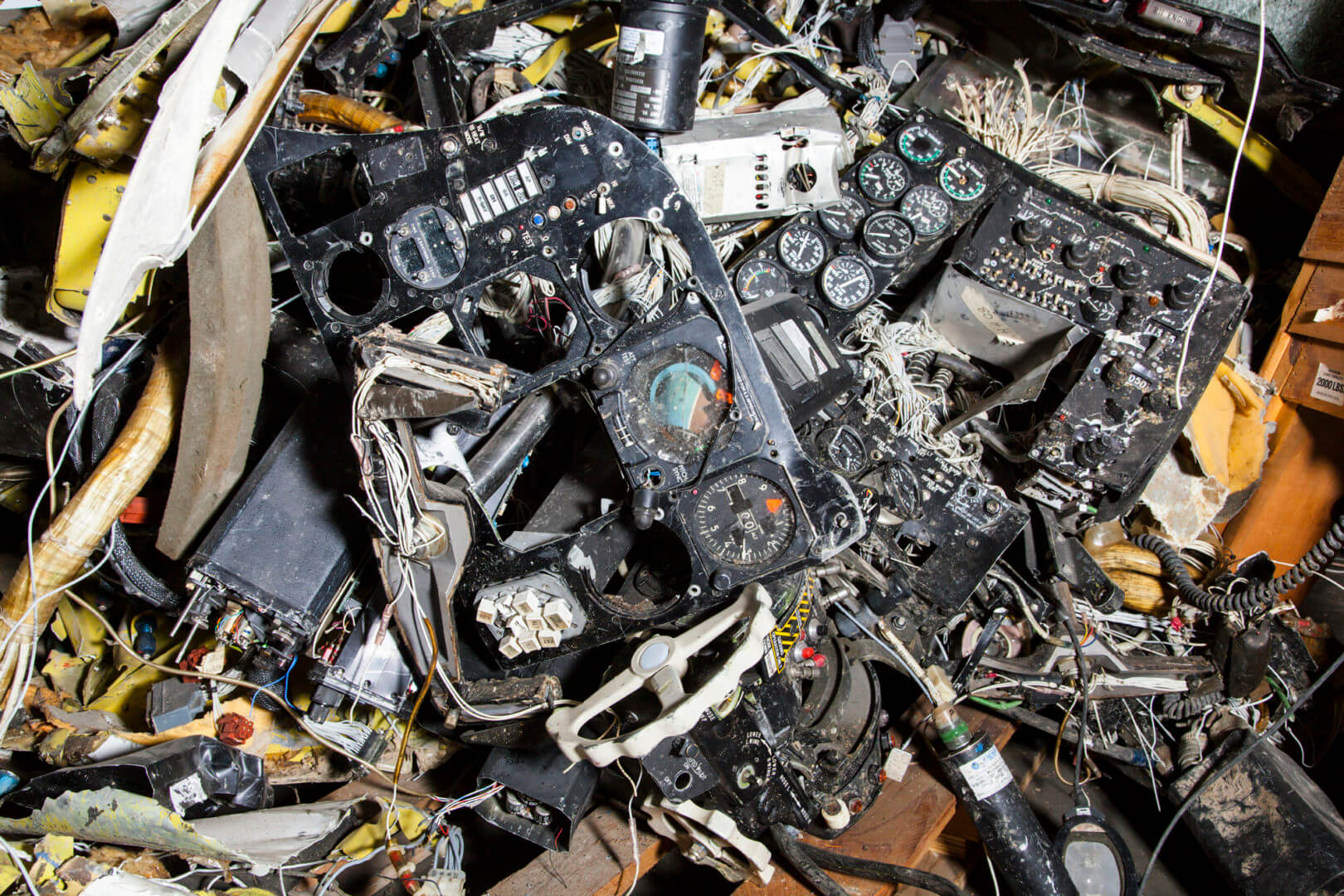
So, after a week of classroom lectures, they arrive at their first scene—laid out on the concrete floor of USC Viterbi’s Aircraft Accident Investigation Lab.
“Approach the wreckage and take it in, in its totality,” Anthony coaches. “You don’t want to focus in on the wreckage if there’s a line of trees a hundred yards away and the tops of the trees are gone. Say to yourself, ‘What am I noticing? What stands out?’”
Usually students work in small groups on any of the lab’s wrecks, which are donated by insurance companies or governments after a formal investigation is complete. Students study models of the plane and look at pictures of the accident site before continuing.
“We have people from every walk of aviation and transportation life,” Anthony said. “The pilots will go here and look at the cockpit and say, ‘Ah, look at the altimeter, it’s stuck at this, and look at the position of the throttles.’ The mechanics or manufacturers, they might say, ‘Let’s take a look at that jack screw and see where the position was.’ You allow the wreckage to speak to you. If there was a fire, what are you noticing besides the fire? You just collect it. You allow your undirected perceptions to guide you.”
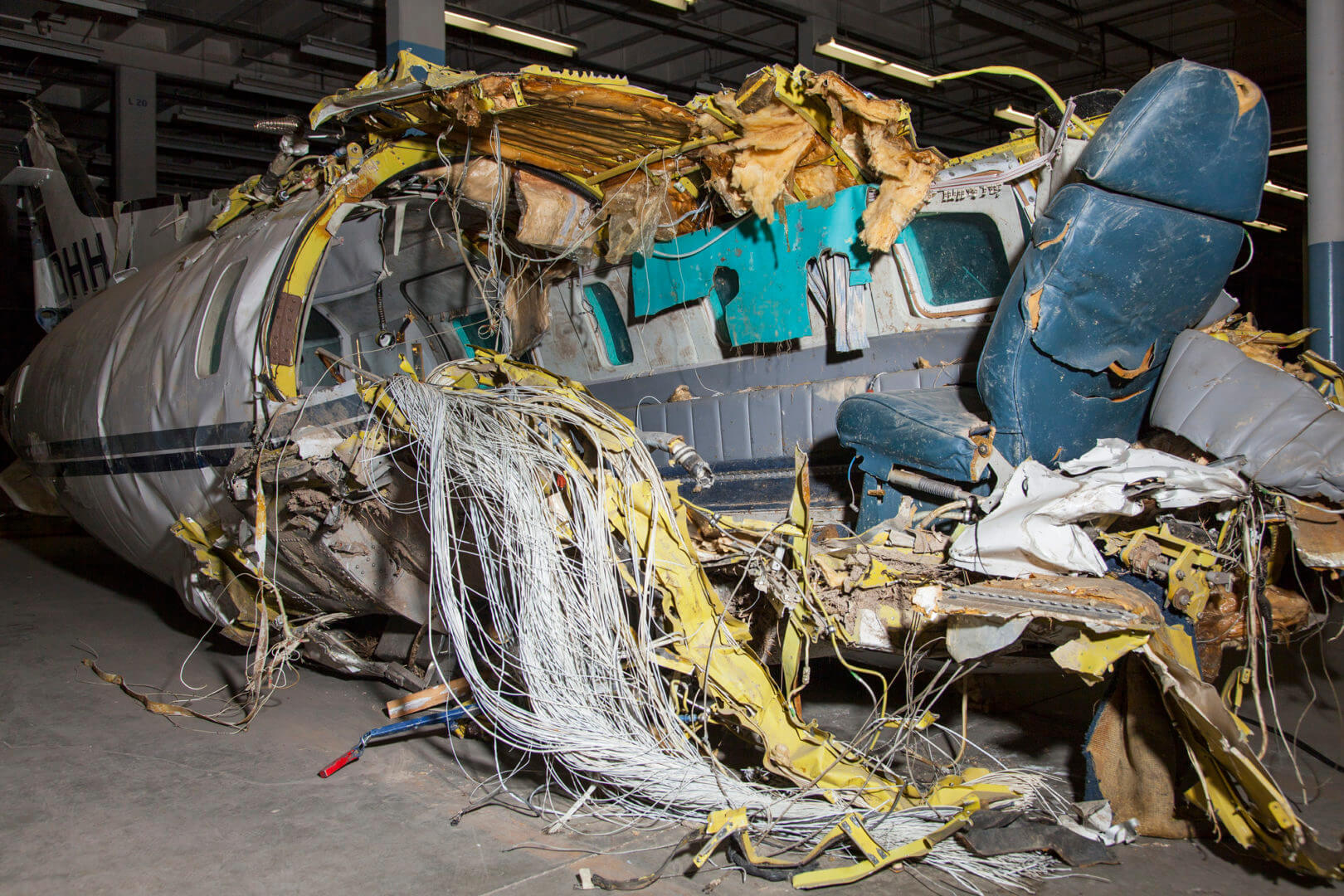
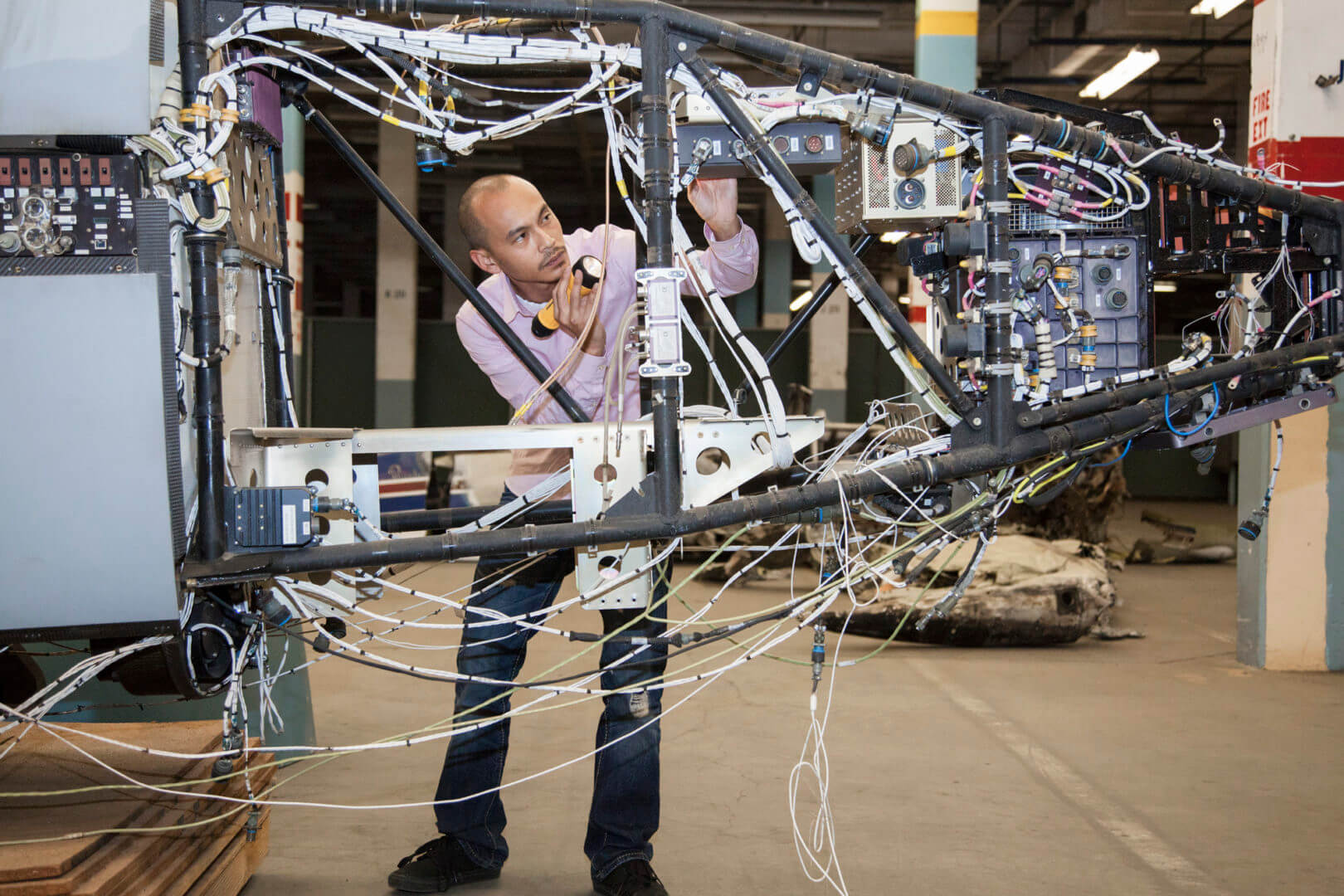
One crash site features two private aircraft. One has a red stripe; the other, blue. The planes collided over the Catalina Channel. Daniel Scalese ’11, who manages the accident investigation lab, explained how students will use the wreckage.
“Students will see, hopefully, that here, there’s a little bit of blue paint. This aircraft did not have any blue paint, and the blue paint is in the area that clearly absorbed the impact,” Scalese said. “And that plane left some of the mud from the tire on there.”
Professionals from Nigeria, Norway, Australia, Brazil and elsewhere participate in the aircraft investigation lab during six annual course offerings. Most are in the middle of their careers in government, corporate, manufacturing or operations. A handful represent NGOs like the United Nations World Food Programme, which often flies to places without working airports.
Aircraft Accident Investigation is one of 23 courses offered by USC’s Aviation Safety and Security Program, which was founded in 1953 to train military officers. Now, students can take combinations of courses for certificates in Aviation Safety and Security and in Systems Safety.
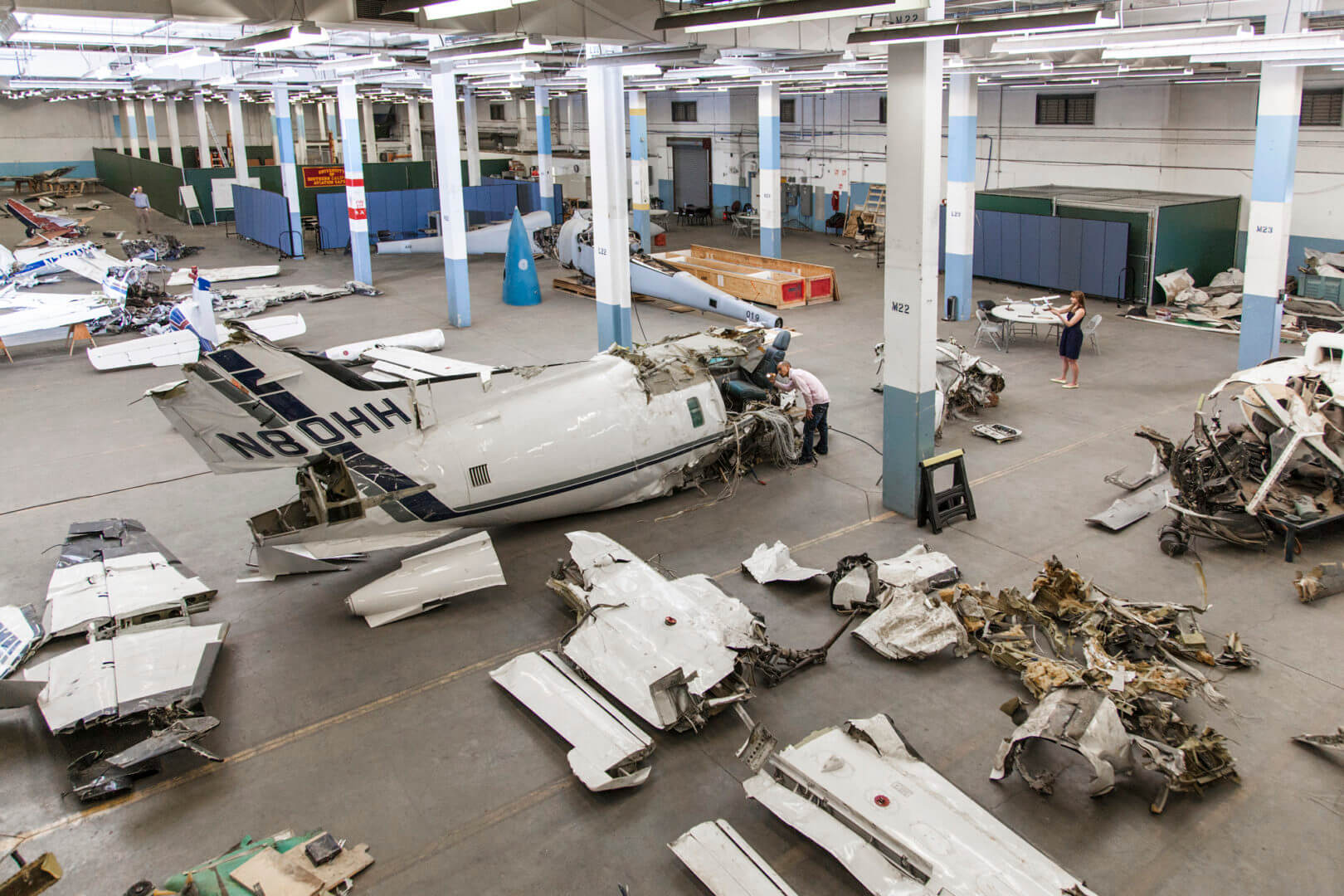
“At USC’s program, there was such a wide breadth of experience and ideas, and I came away with information that I’m putting to use every day in my job,” said Greg Calvert, who completed the Aircraft Safety and Security certificate program this year. Calvert, an Army veteran, oversees risk management and security at Atlantic Coast Aircraft Services in Pennsylvania. As the company develops a new fleet of aircraft, Calvert has been tasked with writing its safety manuals.
“I’ve been able to take a lot of the new ideas in the industry and bring them into our system while we write our manuals and establish our procedures,” Calvert said.
Calvert hasn’t had to investigate any accidents in his current job yet. But by implementing the practices he learned from teachers and peers at the investigation lab, his organization might prevent a few.
“The goal is to ID incidents and hazards and fix them before they happen,” Anthony said. “Looking at accidents is quite emotional when you can relate to it. It has the fixing power of establishing the learning they do in the classroom.”



